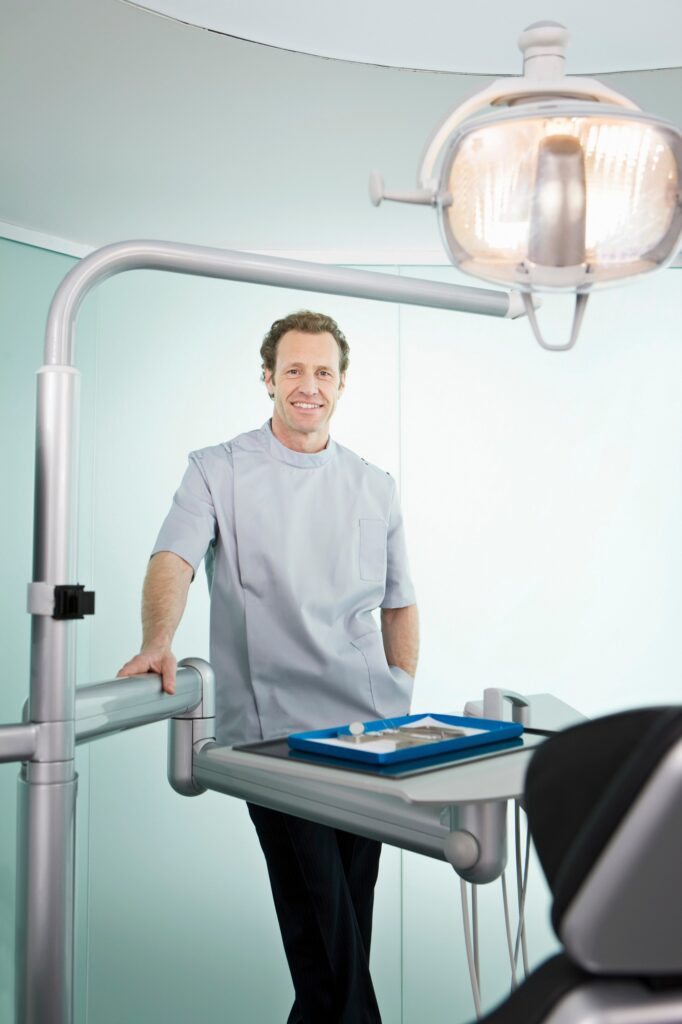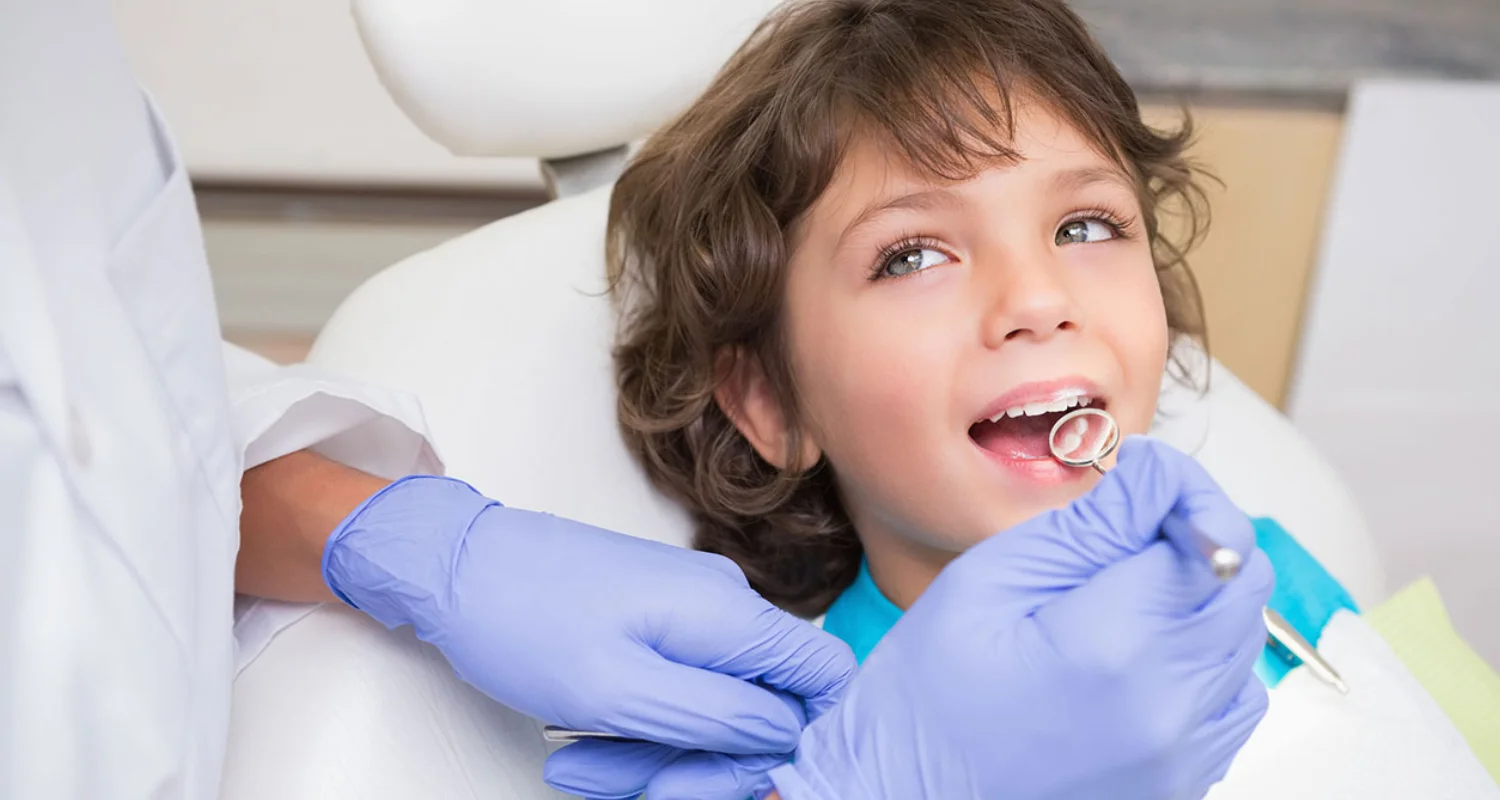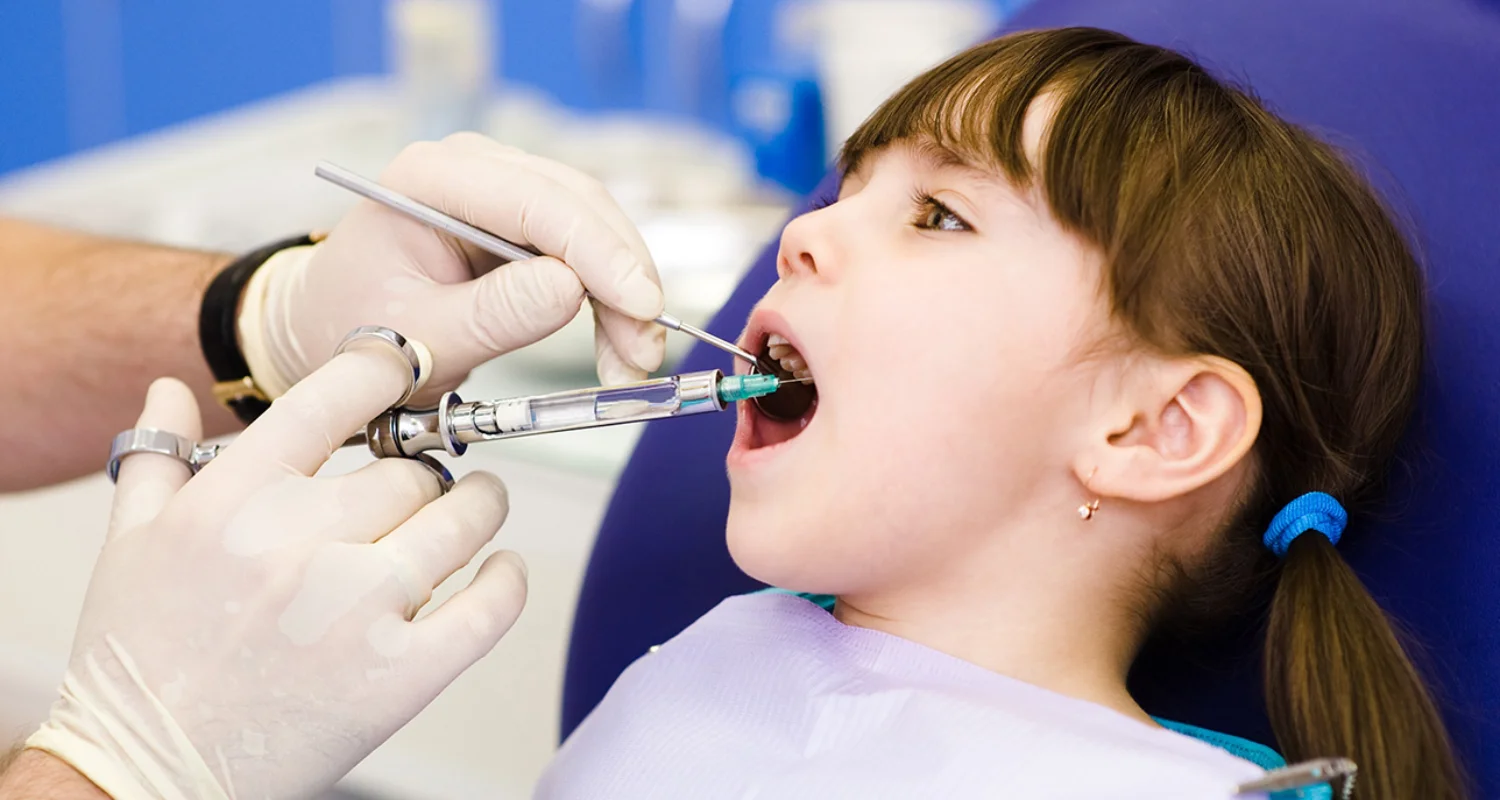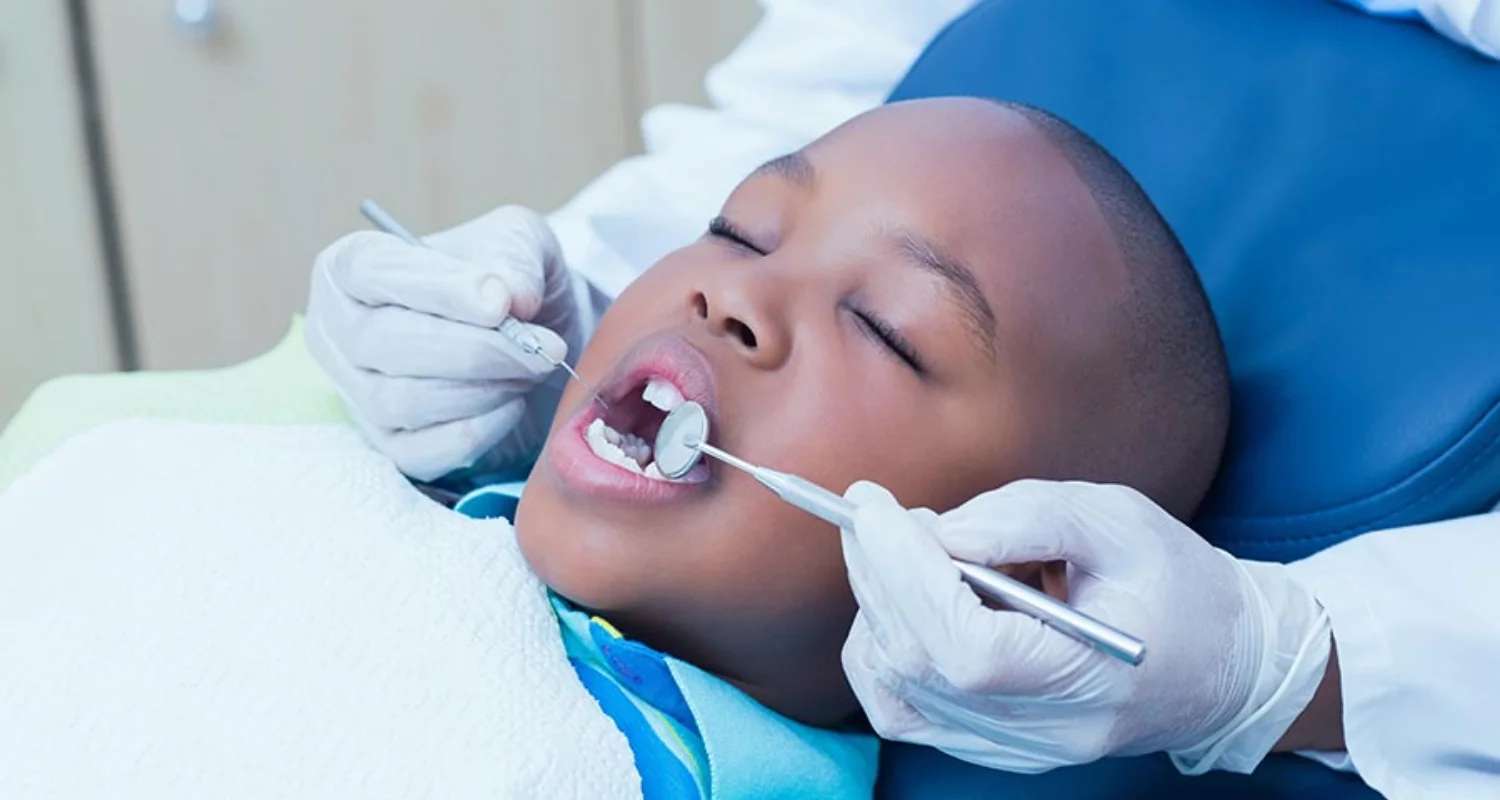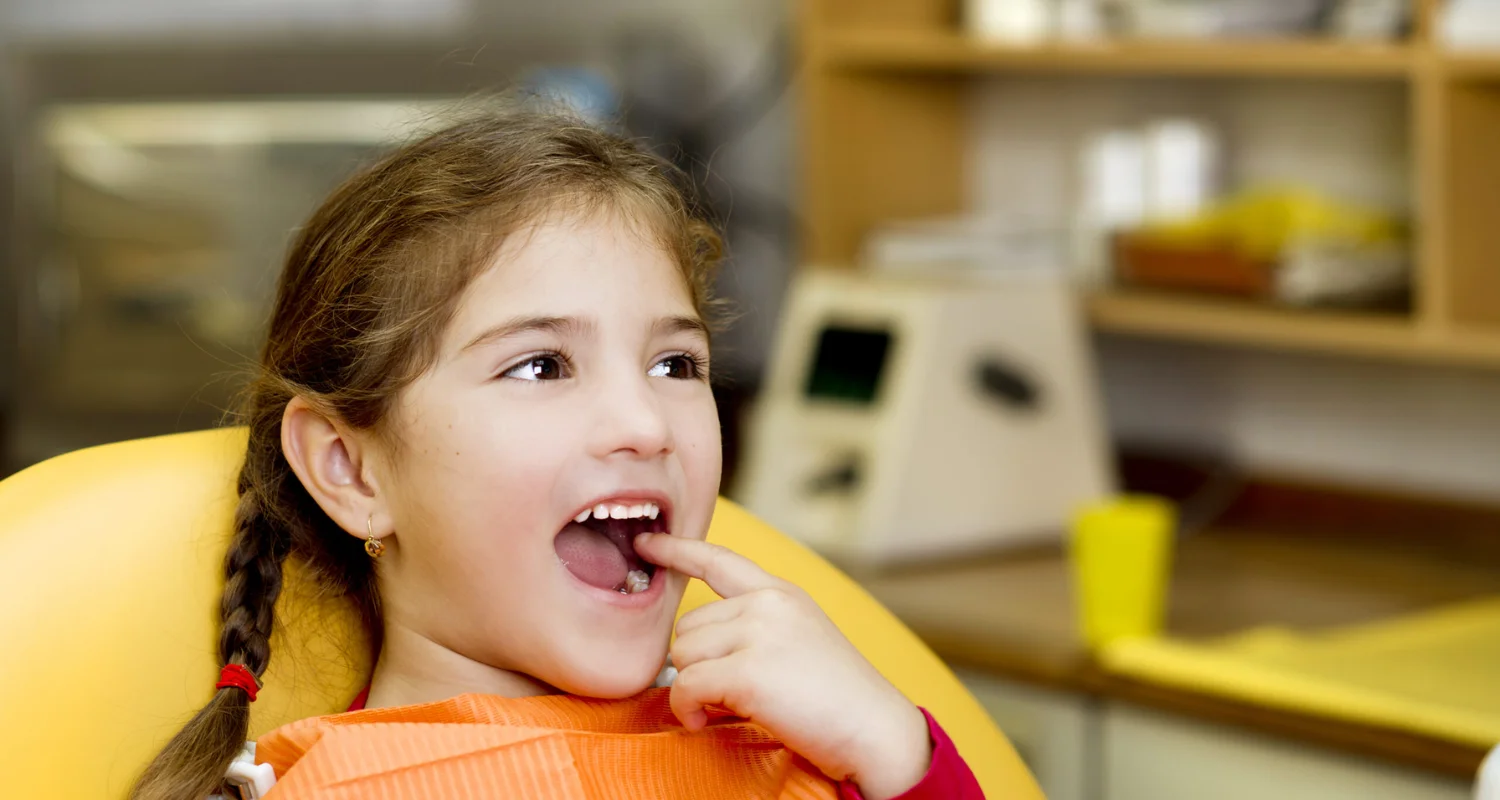Last Updated on: 15th December 2025, 10:17 am
Treating young pediatric patients can be challenging due to their limited cooperation during dental procedures. When a child experiences dental pain or infection, treatment is essential at any age; it may sometimes require dental anesthesia or sedation.
This can be necessary for several reasons: for the child to remain completely still, a severe dental phobia, the presence of multiple dental issues, or the fear of the drill´s noise. The priority is always to ensure the safest and most pain free experience.
We believe that parents and guardians play a crucial role in the success of pediatric dental procedures. This article will help you understand what pediatric dental anesthesia is, why it is safe, the appropriate use by age, and when it is necessary.
What is Pediatric Dental Anesthesia?
Pediatric dental anesthesia refers to the use of medication to prevent painful sensations and discomfort during dental procedures in children. It temporarily blocks nerve signals in the area where the procedure is to be performed, or it induces a state of unconsciousness or deep sedation according to the type of anesthesia used.
Dental anesthesia broadly includes local anesthesia, general anesthesia, and varying levels of sedation. The choice of method depends upon the child, the complexity of the procedure, and the ability of the child to cooperate.
Is Pediatric Dental Anesthesia Safe?
In general, pediatric dental anesthesia, when administered by trained individuals, is safe. The success rate of routine procedures is over 95%. Strict adherence to safety measures is followed in the pre-assessment of the child’s health condition, careful monitoring during the procedure, and post-anesthesia care to ensure safe anesthesia for kids.
Among the more common concerns of parents are possible side effects; but according to statistics, these are very rare, and complications, when encountered, are usually minor. Experts say that the benefits to a pain-free and stress-free dental experience far outweigh the minimal risks involved.
Common Types of Dental Anesthesia Used in Children
Broadly speaking, there are three different types of dental anesthesia: local anesthesia, conscious sedation, and general anesthesia. Each serves a specific purpose for pain control.
Local anaesthesia
With local anesthesia, the pain is controlled by numbing the specific area for the dental procedure, but the child remains awake and can speak. The numbness lasts for a few hours and is suitable for minor operations such as crowns, root canals, fillings, extractions, and scaling.
Some of the safe medications used for rendering dental anesthesia in children are lidocaine, mepivacaine, and articaine; however, the dosage has to be very precise.
Sedation
Sedation in dentistry is primarily used to help manage anxiety, alleviate pain, and keep patients calm and relaxed during procedures. Sedation, often referred to as conscious sedation, allows patients to remain awake yet deeply relaxed. Sedation levels can range from mild to deep, depending upon the child’s age and specific health requirements.
Nitrous oxide sedation
Better known as; laughing gas” or “giggle gas,” this mild sedative gas is inhaled mixed with oxygen to help the child become relaxed but not necessarily asleep. Some children may feel light-headed or giddy, although a few may not like this feeling. If you are interested in know more about it, check here.
General anaesthesia
Putting a child to sleep when getting dental care may be recommended if your child does cooperate to take x-rays, has breathing difficulty, is very frightened, or has a medical condition. Under general anesthesia, the child will be completely unconscious, experience no pain, have relaxed muscles, and retain no memory of the procedure.
In an off-site outpatient surgical center, general anesthesia is administered by a board-certified pediatric medical/dental anesthesiologist. All necessary dental work is completed while the child is asleep. Your child will feel and remember nothing.
How Age Affects Anesthesia Choice
Age remains the major determinant of the type of anesthesia to be administered. In children less than 6 years who cannot overcome fear or remain still, general anesthesia or deep sedation is usually required for complicated procedures. With age, most children can cope well with mild or moderate sedation, especially for simple procedures.
Health conditions and behavioral factors, including anxiety level, could have an impact on the choice; for example, more anxious children require deeper sedation. The final choice will depend upon the child’s age and health condition, the complexity of the procedure, and the cooperation of the child during treatment.
When is Pediatric Dental Anesthesia Necessary?
When is anesthesia needed for kids, you ask? Pediatric dental anesthesia is indicated in certain specific situations, such as:
● Complex procedures: A procedure like extractions, root canals, or extensive dental work may call for general anesthesia or deep sedation to ensure that the child is still and comfortable.
● Severe anxiety or fear: In cases where there is extreme dental anxiety or fear, anesthesia renders the experience less traumatic.
● Very young age or special needs: Anesthesia is often necessary when very young children or children with special needs are not able to cooperate fully for the performance of dental care.
● Infection or pain: When a child has a fever, is in severe pain, or suffers from a serious infection, anesthesia allows for comfortable dental care.
Common Procedures Requiring Anesthesia
● Multiple extractions.
● Dental restorations (crowns, fillings on more than one tooth).
● Oral surgery, such as cyst removal or frenectomy.
When Anesthesia Might be Optional or Unnecessary
In minor procedures like simple fillings or cleanings, very mild sedation or no anesthesia at all may be suggested if the child is comfortable and cooperative during the procedure.
What Parents Should Know Before the Procedure
If general anesthesia is required, there are guidelines regarding eating and drinking prior to the procedure:
Infants less than 12 months of age
● Formula feeding is acceptable until 6 hours before the procedure.
● Breastfeeding is acceptable until 4 hours before the procedure.
All children
● No solid foods or non-clear liquids after midnight before the procedure. This includes milk, formula, juice with pulp, coffee, gum, or candy.
● Clear liquids water, Pedialyte, clear juices are okay until 2 hours before coming to the hospital.
● Keep taking daily medications unless the doctor gives other instructions.
Questions to Ask Your Child’s Dentist
Here is a list of potential questions to ask the dentist before the procedure:
● What medication is going to be used to anesthetize my child for this procedure?
● How is the appropriate dosage determined for my child at his/her age and weight?
● What safety protocols during a procedure are being used?
● Who is going to monitor my child’s vitals during this anesthesia?
● What are the possible side effects or risks with this anesthesia?
● How long will the anesthetic take to work, and how long will it last?
Understanding pediatric dental anesthesia is crucial for ensuring your child’s safety and comfort during dental procedures. By being informed about the types of anesthesia, their safety, and when they are necessary, you will better support your child’s dental care journey.
Always consult with your child’s dentist, ask the right questions, and follow pre- procedure guidelines to ensure a smooth and stress-free experience.
Frequently Asked Questions
Is pediatric dental anesthesia safe for all children?
Generally, yes, but the type may vary based on the child’s health. Discuss your child’s medical history with the dentist or anesthesiologist for tailored safety measures.
How long does dental anesthesia last in children?
The effects of local anesthesia can endure for a few hours, while the effects of sedation can last from 30 minutes to a few hours. General anesthesia will keep your child asleep for the duration of the procedure and groggy for several hours afterward.
What are the potential side effects?
Common side effects are drowsiness, nausea, sore throat, and mild swelling or bruising. These are usually very temporary and can be minimized by rest and fluid intake. Contact your dentist if unusual symptoms occur.
Can my child eat before anesthesia?
No solid food or non-clear liquids after midnight before the procedure. Clear liquids are allowed up until 2 hours before the procedure. Follow the specific instructions from your dental team.
What if my child has an adverse reaction?
Seek immediate medical attention if your child experiences difficulty breathing, severe allergic reactions, or prolonged drowsiness. Monitor your child closely and follow post-operative instructions for a safe recovery.
Share
References
1. Council on Clinical Affairs, American Academy of Pediatric Dentistry (2015). Guideline on Use of Local Anesthesia for Pediatric Dental Patients. Pediatric dentistry, 37(5), 71–77. https://www.aapd.org/assets/1/7/G_LocalAnesthesia.pdf
2. American Academy on Pediatric Dentistry Ad Hoc Committee on Sedation and Anesthesia, & American Academy on Pediatric Dentistry Council on Clinical Affairs (2008). Policy on the use of deep sedation and general anesthesia in the pediatric dental office. Pediatric dentistry, 30(7 Suppl), 66–67. https://www.aapd.org/assets/1/7/P_Sedation1.PDF
3. Yagudaev, M., Yarom, N., & amp; Ashkenazi, M. (2024). Overcoming local anesthesia failure during routine dental treatments in children. International journal of paediatric dentistry, 34(5), 680–691. https://doi.org/10.1111/ipd.13169
4. Lola Adewale, Anaesthesia for paediatric dentistry, Continuing Education in Anaesthesia Critical Care & Pain, Volume 12, Issue 6, December 2012, Pages 288–294, https://doi.org/10.1093/bjaceaccp/mks045
5. Rita A. (May, 2019) Anesthesia or Sedation for Your Child’s Dental Work? https://www.healthychildren.org/english/healthy-living/oral-health/pages/anesthesia-or-sedation-for-your-childs-dental-work.aspx
-
Nayibe Cubillos M. [Author]
Pharmaceutical Chemestry |Pharmaceutical Process Management | Pharmaceutical Care | Pharmaceutical Services Audit | Pharmaceutical Services Process Consulting | Content Project Manager | SEO Knowledge | Content Writer | Leadership | Scrum Master
View all posts
A healthcare writer with a solid background in pharmaceutical chemistry and a thorough understanding of Colombian regulatory processes and comprehensive sector management, she has significant experience coordinating and leading multidisciplina...

